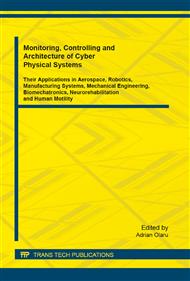p.588
p.597
p.606
p.617
p.626
p.634
p.642
p.650
p.661
Study on Power Development in Children Adolescents in Human Motricity
Abstract:
Purpose, Educational process organized and conducted for the preparation of the volleyball players will have to teach them how to win through each action point game in hand, putting it all worth. By its nature, involves a volleyball game open battle between attack and defense. The actions follow each other in a game properly basic game situations. Approach seen in the overall structure of the game of volleyball and training components, based on objective reality, the power may be the quality that enable people to gain a point. At work and in the attack, who hit faster, stronger and a point as high ball, has all chances to score. Development of high power jump, jump off work, attack, attack raising the jump, jam, easy victory. Methods, We have come a rich background material designed to general and specific to allow me an in-depth approach that we used the theme chosen by direct observation, which allowed me necessary data recording and development work in their dynamic test method we applied Conclusions, In volleyball, physical training, work for power development in girls 13-14 years old (hope), in relation to their physical development, a chapter remained insufficiently addressed in the literature. Modern game of volleyball, in addition to technical and tactical side, emphasis on preparing players and their physical size, which is why I was interested in this aspect. The paper aims to select and apply the training hopes (junior III) means for developing a set of maximal anaerobic power in the legs, giving the planning system operated during preparation of a competitive year. I want to check that: Þ have led to the development means chosen maximal anaerobic power globally Þ the players with large (178-180 cm), recorded an improvement in prison, comparable to that of the players with medium-sized (168-177cm).
Info:
Periodical:
Pages:
661-670
Citation:
Online since:
October 2014
Authors:
Keywords:
Price:
Сopyright:
© 2014 Trans Tech Publications Ltd. All Rights Reserved
Share:
Citation:


